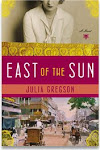 By Jill Jonnes
By Jill Jonnes
On August 14, 1889, Thomas Edison's third day in France, he and his entourage arrived at the Paris Exposition Universelle at 9 a.m. to ascend the world's tallest structure. "Like everyone else I've come to see the Eiffel Tower," the Wizard of Menlo Park declared. When Parisians had first seen Gustave Eiffel's design for his 1,000-foot tower, they hurled no end of insults and lawsuits, denouncing his winning entry for the fair's centerpiece as "a black and gigantic factory chimney, crushing [all] beneath its barbarous mass," a dangerous and hideous "scaffold" even "America would not have."
But by late summer of 1889 when Le Grand Edison arrived to experience this monumental wrought-iron wonder, even Eiffel's worst critics had conceded the tower's originality and grace. The few hold-outs consoled themselves that the tower would mar their beautiful city only for twenty years, when Eiffel would have to dismantle it.
From the day the tower opened to the public on May 15, 1889, it was mobbed. The Prince and Princess of Wales, the Shah of Persia, Lily Langtry, Annie Oakley, a shepherd on stilts, minor royalty of every stripe, politicians, scientists, artists, tourists from the farthest corners of the globe, everyone had to ascend La Tour Eiffel. On the cool August morning when Edison ascended, the famous inventor's party emerged from the elevator to find an unlikely group of fellow American sightseers: Chief Rocky Bear and several dozen Sioux Indians from Buffalo Bill's Wild West show, one of the great sensations of that World's Fair summer. The Indians, their long hair entwined with feathers, rushed over, whooping a welcoming chant to a startled Edison, who gathered his wits to ask how was Chief Sitting Bull?
Gustave Eiffel, away at a spa in Evian, missed Edison's first visit. Subsequently, Eiffel hosted a festive champagne luncheon on the tower for the American inventor, his wife Mina, daughter Dot, and a few French engineers. Afterwards, all repaired to Eiffel's private apartment atop the tower, where Edison demonstrated his new improved talking phonograph, one of the other huge sensations of the fair. Eiffel, who had spotted Charles Gounod dining at a nearby table in the Café Brebant, invited the composer of Faust to join them. High above Paris, Gounod serenaded Edison and played the piano until late into the evening.
Edison was one of the most famous men of his day and he was full of enthusiasm for Gustave Eiffel and his tower. So from the moment I learned of their meeting, I anticipated finding a photo of the two men together. At the Eiffel Archives at the Museé d'Orsay in Paris, I worked my way through the many boxes of century-old photos and charming souvenir menus, but found no such image. Was it possible that Edison and Eiffel, two celebrated men who so admired one another, never posed for a photo together? Especially since there was a photo of Edison posing with Adolphe Salles, Eiffel's son-in-law and partner in their global bridge-building business. Had the Eiffel family perhaps chosen not to pass the photo along when they gave Gustave's papers to the archives? Just one of those little puzzlements.
Sadly, I had no better luck at the vast and wondrous Edison Archives at Rutgers University or at the National Park Service's Edison Historic site at West Orange. They had no photographs at all of Thomas Edison at the Paris World's Fair of 1889, one of the high points of his professional career. And so, I settled for next best, the great inventor with his talking phonograph in 1892.
Jill Jonnes is author of Eiffel's Tower: And the World's Fair Where Buffalo Bill Beguiled Paris, Artists Quarreled, and Thomas Edison Became a Count, and Conquering Gotham: Building Penn Station and Its Tunnels as well as numerous other best-selling books.














